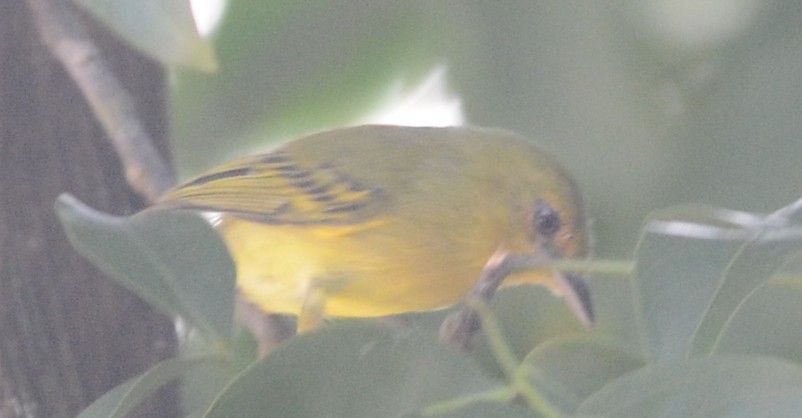Yellow-breasted Flycatcher
A species of Yellow-olive Flycatcher and Allies, Also known as Ochre-lored Flycatcher Scientific name : Tolmomyias flaviventris Genus : Yellow-olive Flycatcher and Allies
Yellow-breasted Flycatcher, A species of Yellow-olive Flycatcher and Allies
Also known as:
Ochre-lored Flycatcher
Botanical name: Tolmomyias flaviventris
Genus: Yellow-olive Flycatcher and Allies
Content
Description General Info
 Photo By Nikolaj Mølgaard Thomsen
Photo By Nikolaj Mølgaard Thomsen Description
The ochre-lored flatbill (Tolmomyias flaviventris) or yellow-breasted flycatcher, is a passerine bird in the tyrant flycatcher family. It is found in South America, ranging from Colombia and Venezuela south to Peru, Bolivia, and Brazil, and on both Trinidad and Tobago. There are significant variations in its voice and plumage, with western birds duller and more olive, and eastern and northern birds brighter and more ochre-yellow. The two are sometimes considered separate species, the western olive-faced flatbill (or flycatcher), T. viridiceps, and the eastern and northern ochre-lored flatbill (or flycatcher), T. flaviventris. This species is found in secondary growth and the edges of mangrove swamps. The bottle nest is made of plant fibre and suspended from a branch, usually near a wasp nest, which presumably provides some protection from predators. The typical clutch is two or three creamy white eggs, which are marked with violet, mostly at the larger end. Incubation by the female is 17 days to hatching. The ochre-lored flatbill is approximately 12.7 cm long and weighs 11.3 g. The head and upperparts are olive-green with darker, yellow-edged, wing and tail feathers. There are two yellowish wing bars. The throat, breast and eye-ring are golden yellow, the lores are ochreous, and the abdomen is dull yellow. The bill is flattened laterally, and is black above and white below. Sexes are similar. There are other races, differing in the tone of the upperpart or underpart colour. Ochre-lored flatbills are inconspicuous birds, tending to keep to high perches from which they sally forth to catch insects. The call is a loud whistled peeee-it. 
Size
13 cm
Nest Placement
Tree
Feeding Habits
Yellow-breasted Flycatcher, a flycatcher, primarily feeds on insects, complementing its diet with fruit. It exhibits foraging behavior, snatching prey mid-flight or from foliage. Remarkably, yellow-breasted Flycatcher adapts to seasonal food availability, showing dietary flexibility.
Habitat
Yellow-breasted Flycatcher typically inhabits secondary growth, forest edges, and mangrove swamps. These birds are widespread in a variety of forested landscapes, including dry to humid forests, woodland borders, shrubby areas, gallery forests, and clearings. They favor riparian growth, várzea forest edges, and sometimes appear in terra firme forests and open sandy soil savannas. Apart from natural forested areas, yellow-breasted Flycatcher can also be found in mangroves in the Guianas, coffee plantations, and gardens in Suriname.
Dite type
Insectivorous
General Info
Feeding Habits
Bird food type
Species Status
Not globally threatened.

 Photo By Nikolaj Mølgaard Thomsen
Photo By Nikolaj Mølgaard Thomsen Scientific Classification
Phylum
Chordates Class
Birds Order
Perching birds Family
Tyrant flycatchers Species
Yellow-breasted Flycatcher